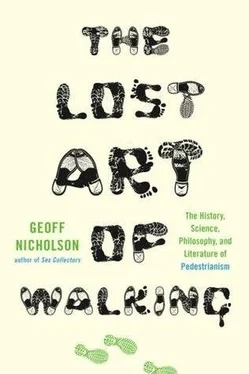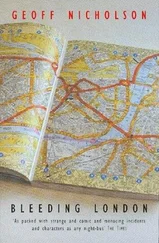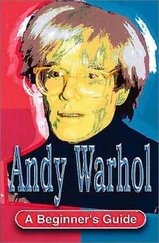However, when it comes to chilly reserve, along with nobility, self-sacrifice, and British understatement, none can beat Captain Lawrence ‘Titus’ Oates, a member of Scott’s expedition. Oates, suffering from frostbite, and realizing that he was a burden that threatened to destroy the mission, walked out of the tent and into the oblivion of an Antarctic blizzard on March 17, 1912, having said to Scott and the others, ‘I am just going outside and may be some time’.
There is a kind of perfection about this walk, and of course none of the other members of the expedition said, ‘Hey, steady old man, don’t go out for a walk, stay here with us. What does it matter if the expedition gets ruined? Your health’s the most important thing’. That would have ruined things in quite a different way.
♦
There seems to have been little insouciance or selflessness when it came to the first moon walk — I mean the literal sort, not the Michael Jackson version. The original plan for the Apollo 11 mission had Buzz Aldrin slated to be the first man to walk on the moon, but Neil Armstrong, as team leader, changed that plan so that he could be first. Aldrin was understandably furious, so much so that he refused to take any pictures of Armstrong walking on the moon: a gloriously petty revenge. This moon-walking disappointment is sometimes offered as an explanation for Aldrin’s descent into depression and alcoholism, from which he later recovered.
The man who emerges with the most dignity from the moon landing and walk is Michael Collins, the third member of the Apollo team, the one who remained in the orbiting craft and never got to walk on the moon at all. Collins does have the minor distinction of being the third man ever to walk in space, in 1966 on Gemini X when he left the craft to perform a couple ‘extravehicular activities’, but let’s face it, a gravity-free space walk really isn’t any kind of a walk, it’s more of a float.
In any event Collins had enough of the right stuff not to be disappointed, or at least not to let the disappointment spoil his life. No doubt it helped that he knew all along that he wouldn’t be walking on the moon, and wouldn’t be thwarted at the last minute the way Aldrin was. According to Collins, ‘I think he [Aldrin] resents not being the first man on the moon more than he appreciates being the second’.
As Armstrong walked on the moon he fluffed his big line. He said, ‘That’s one small step for man, one giant leap for mankind’, when he should have said, ‘one small step for a man’. Did anybody care? There is, however, footage in circulation indicating that Armstrong’s initial reaction was far more colloquial and unscripted. On the sound track to a blurred bit of moon footage he’s heard to say quite clearly, ‘Jesus H. Christ, we’re on the fucking moon’. And Houston, getting into the spirit of the thing, replies, ‘You’re cleared to hook up lunar equipment conveyor to walk, fucking walk, on the moon’. This has an air of believable authenticity about it, though for all we know it may have been faked. Of course there are sources, not all of them certifiably insane, claiming that man has never set foot on the moon at all. This, too, has been offered as an explanation for Buzz Aldrin’s drinking. Having to pretend that you’d walked on the moon when you hadn’t would surely create every bit as much anguish as having been the second person to walk there.
Buzz Aldrin has been known to punch out people who accuse him of being part of a hoax, and while I’m not immune to the joys of a conspiracy theory, I find it hard to understand the pleasure some people take in believing that the moon walk never happened. Nevertheless, the not-quite-real walk, the walk that doesn’t quite take place, that takes place largely or solely in the imagination, that contains an element of fantasy or fraud, is a curious phenomenon and more common than you’d suppose.
♦
In September 1954, Albert Speer, Hitler’s chief architect and then his Minister for Armaments, made up his mind to walk from Berlin to Heidelberg, a distance of 620 kilometers. Since he was incarcerated in Spandau prison at the time, and was to remain there until 1966, his walk had to be an entirely theoretical and imaginary one.
He paced out a circular course of 270 meters in the prison garden, which he had designed, and began a journey that would require him to make just over 2,296 circuits of that course. He set himself the task of walking seven kilometers seven times a week. If he fell behind one day he’d try to make it up the next, and he kept detailed, some would say obsessive, records of his walking, noting the distances covered, along with daily and overall averages. Rudolf Hess, Hitler’s deputy in the Nazi party, also an inmate of Spandau, helped him keep count.
Speer completed his ‘journey’ to Heidelberg on March 19, 1955, his fiftieth birthday. He then decided he might as well continue and make another imaginary walking trip, this time to Munich and beyond. Again Hess tried to be helpful and suggested he could walk all the way to Asia, though Speer fretted that almost any route he might take would involve having to walk through some dreaded communist countries.
According to Speer’s diary, he and Hess had some discussions about whether or not this sort of walking was inherently sane. Speer at first claimed it wasn’t and writes, ‘I insisted on my claim to have a screw loose’, an odd thing to insist on unless he thought that incipient insanity might speed up his release. Hess, however, was having none of it. ‘That just happens to be your pastime’, he said, quite reasonably, and this is surely one of the very rarest moments in history when one sides with Hess rather than Speer.
By September 18, 1956, Speer had come round to Hess’s point of view and was able to record, ‘I have walked 3326 kilometres — counting the winter that makes a daily average of 9.1 kilometres. As long as I continue my tramping, I shall remain on an even keel’.
A perfect walk is certainly one that keeps you on an even keel, and Speer, for all his claims to have a screw loose, wasn’t perpetrating any deception about where and when he was walking. He was telling no lies, and the fact is, a single lie may be all that’s required to utterly destroy a walker’s reputation and credibility.
Ffyona Campbell was a British walker (she now describes herself as a retired pedestrian) who first came to public attention in 1983, at the age of sixteen, when she walked the 875 miles from John o’ Groat’s in the North of Scotland to Land’s End in Cornwall.
This was to become the first phase of a round-the-world walk that would take eleven years and cover 20,000 miles. She crossed America east to west. She crossed Australia, from Sydney to Perth, in ninety-five days, faster than any man had ever done it. She walked from Cape Town to Tangiers, about 10,000 miles, in a little over two years. And then she walked through Europe, from Algeciras in Spain back to London to complete the trip. If you find yourself asking how a round-the-world trip can entirely avoid Asia, I share your puzzlement.
I lived in England throughout this period and I don’t remember Campbell being exactly front-page news, though those of us who took notice of these things were well aware of her two travel books, Feet of Clay (1991) and On Foot Through Africa (1994).
However, I do remember, in 1996, when she published a third book called The Whole Story , that all hell broke loose and she became tabloid fodder. Being a good-looking blonde was both a blessing and a curse for her, being by all accounts a thoroughly difficult and unsympathetic character made her toast.
This third book was a confession. She could no longer live a lie, she said. She revealed that early in her walking career, while she was on the American part of her journey, at age eighteen, she became pregnant by a member of her support team, a driver named Brian Noel, whom she was regularly ‘bonking’ (her word). Being pregnant slowed her down. She could no longer complete the grueling daily requirements to keep on schedule. She had commitments to a sponsor, Campbell’s soup (no relation), that was organizing events at stops along the way.
Читать дальше












